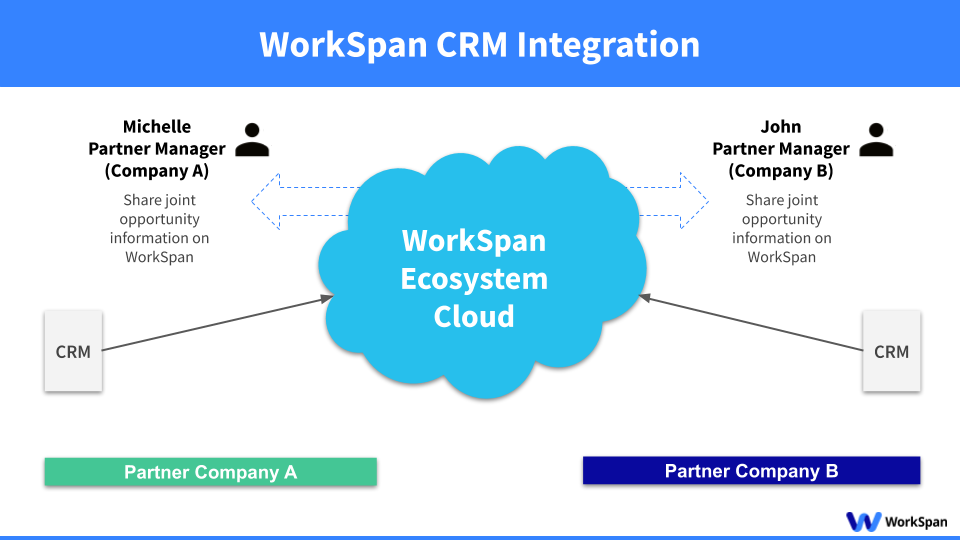
“Partners that adopt an ecosystem business model will grow 50% faster than partners which do not.” – IDC’s Worldwide IT Channels and Alliances 2019 Predictions
In today’s fast-paced market with sky-high customer expectations and tough competition, it’s critical for all companies to work with their ecosystem of trusted partners to collaborate on joint opportunities, share key information to accelerate deal cycles, and grow business together.
That’s a tough challenge though! Partner business managers (PBMs) must continuously relay information to each other to maintain transparency and keep their partners in the loop. Even though technology has helped streamline a lot of communication, most partner business processes are still manual, tedious, and error-prone.
In this post, we will take a look at the existing complicated and unscalable state of partnerships. We share a unique and powerful solution to streamline the process of managing relationships with multiple partners to deliver the most innovative and timely solutions for your customers in 2020 and beyond.
Challenges of managing partnerships with traditional processes
Partner managers across companies share data using individual spreadsheets and emails. Let’s consider an example (Figure 1) of how two partner managers (Michelle & John) from two partner companies, communicate with each other:
- Every week, Michelle downloads an opportunity report from her CRM system into a spreadsheet.
- She manually cleans and transforms the data to remove any company confidential information and any information relating to the other partners she manages, so it’s ready to be sent to her partner John.
- Michelle sends the spreadsheet via email or shared folder to John.
- At his company, John also pulls an opportunity report from his CRM and manually cleans his data to remove confidential information from his report.
- John then combines the two spreadsheets, and converts and reconciles the data received from Michelle to create a single view of the pipeline opportunities their sales teams are working on.
- It is only at this point (often after hours of work) that they now have a consolidated view of their shared pipeline to identify issues, update account strategies, execute on joint opportunities, and truly understand the value driven by the partnership.
And remember that after all this hard work, the data is obsolete the minute new partner opportunities are added to CRM, or existing deal statuses change.
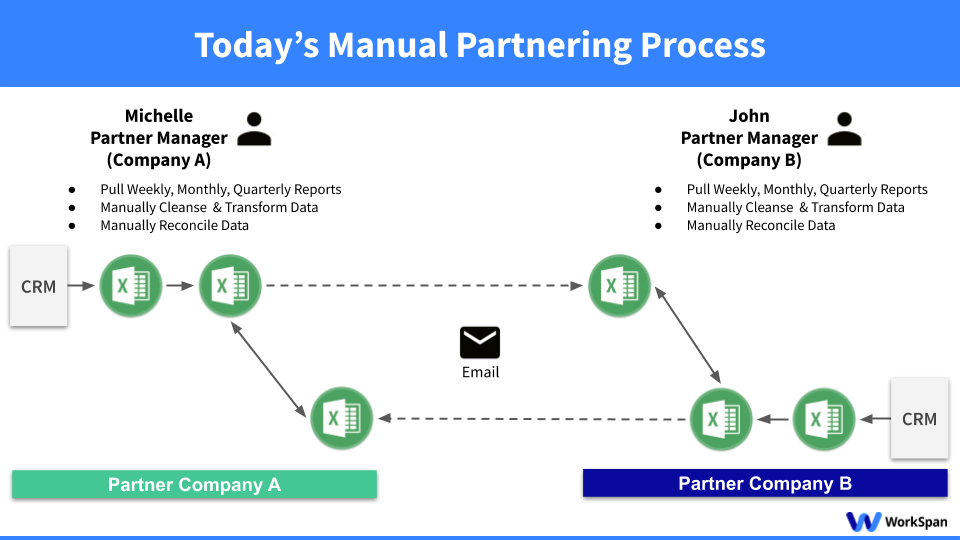
The problem quickly gets out of hand when a PBM is working with multiple partners, multiple spreadsheets, and a constant barrage of back & forth emails. In multi-partner relationships (Figure 2), Michelle is working with many PBMs from various partners via numerous spreadsheets and multiple emails.
As you can imagine - it’s chaos.
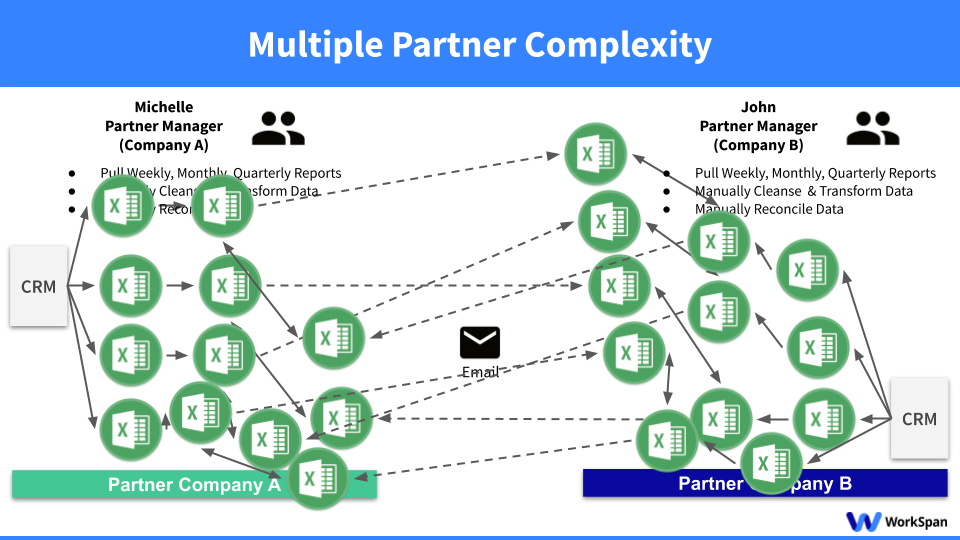
The traditional manual process for managing joint pipelines with partners is time-consuming, error-prone, and gums up your sales execution. Furthermore, it amplifies issues such as:
- Inaccurate and out of date deal information.
- No ability to accurately forecast shared opportunities.
- Nearly impossible to track results and progress.
- Disjointed customer buying experience filled with friction.
All of these inefficiencies pile-up resulting in:
- Missed opportunities as deals get dropped.
- Longer sales cycles and smaller deal sizes.
- Increased risk of exposing confidential information.
- Unreliable reporting for partner-driven pipeline and revenue.
Saddled with siloed processes, miscommunication, and no single source of truth, partner ecosystem management becomes a monumental and frankly impossible task.
When there is an Ecosystem problem, there is a WorkSpan solution
Integrate your CRM into the world’s first neutral Ecosystem Cloud platform.
WorkSpan Ecosystem Cloud allows partner managers at some of the top technology companies in the world to collaborate, co-sell, and scale with their ecosystem partners in a single, neutral, shared network. Partner Managers log into WorkSpan once, review their joint opportunities, collaborate, and close business together with all of their top partners on the network.
The power of this shared network is increased exponentially when companies plug their CRM systems directly into the Ecosystem Cloud.
With WorkSpan’s CRM Integrations, partners can:
- Share joint opportunities on a single platform.
- Control access to data through fields you share with your partners, and fields that remain private to your company only.
- Collaborate between partner managers across multiple organizations.
- Create a stable and secure data flow that works even when multiple partners are working on the same opportunity together.
WorkSpan streamlines the entire process by eliminating the need for external spreadsheets and long email threads. The process keeps the data safe inside the secure Ecosystem Cloud.
To provide the most flexibility for various use-cases and customer needs, WorkSpan offers 3 approaches for partner managers to bring pipeline opportunities into WorkSpan:
- Upload a spreadsheet of opportunities into WorkSpan.
- Set up a recurring report of opportunities that are automatically imported into WorkSpan.
- Pull opportunities into WorkSpan through a public API integration

Optimizing your CRM integration:
- WorkSpan helps you define (Figure 4) CRM shared fields that you will share with your partner and private fields that only employees of your company can see. (For example, you might choose to share the Account Name and Region on the opportunity, but keep the Deal Amount and CRM Stage private.)
- You may also choose to transform your data to not divulge all information on a CRM opportunity. For example, you could define deal size to be automatically translated into S, M, L, XL rather than sharing the exact dollar amount with your partner.
- When new opportunities are added from your or your partner’s CRM, Partner Managers are able to add opportunities to the appropriate partner sales plans for reporting.
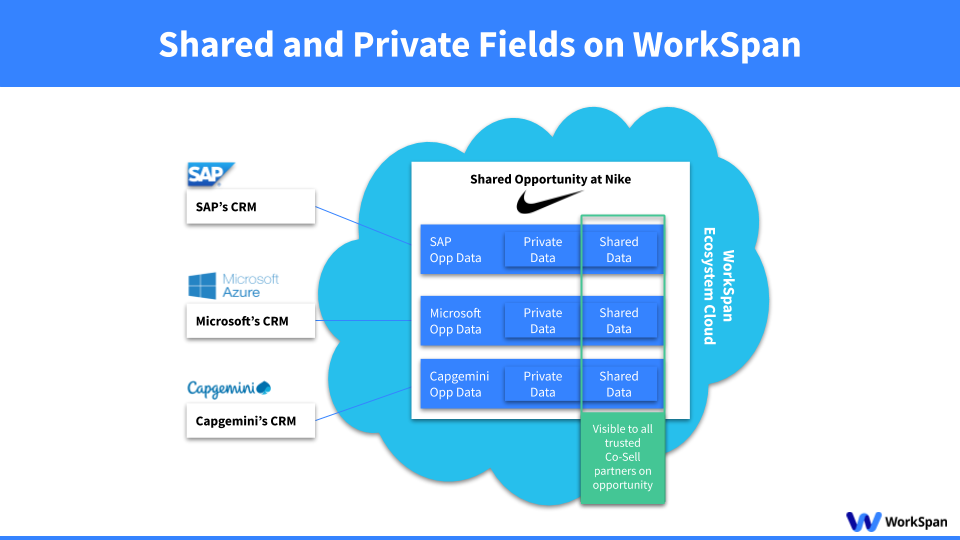
A Single, Shared System to Drive Joint Opportunities
So what does this new world look like? Simplicity. No more reconciling spreadsheets. No more spending hours on administrative tasks. Partner managers can now focus on partner strategy, streamlining execution, and measuring performance. (Figure 5)

When each partner has integrated their CRM to Ecosystem Cloud, all of these reconciliations go away and all partners working together on joint opportunities have a single, shared view of the opportunity and can focus on collaborating to close the business together.
This integration model supports partners that are working one-on-one on an opportunity together, or on opportunities where 2, 3, 4, or more partners are working to close an opportunity together. In WorkSpan, all partners get a shared view of the opportunity to progress across companies.
Partner managers have full control over sharing their CRM opportunities in WorkSpan, with partners as well as with employees in their own company. As the opportunity is updated in CRM, the shared opportunity data is automatically refreshed in WorkSpan via the integration.
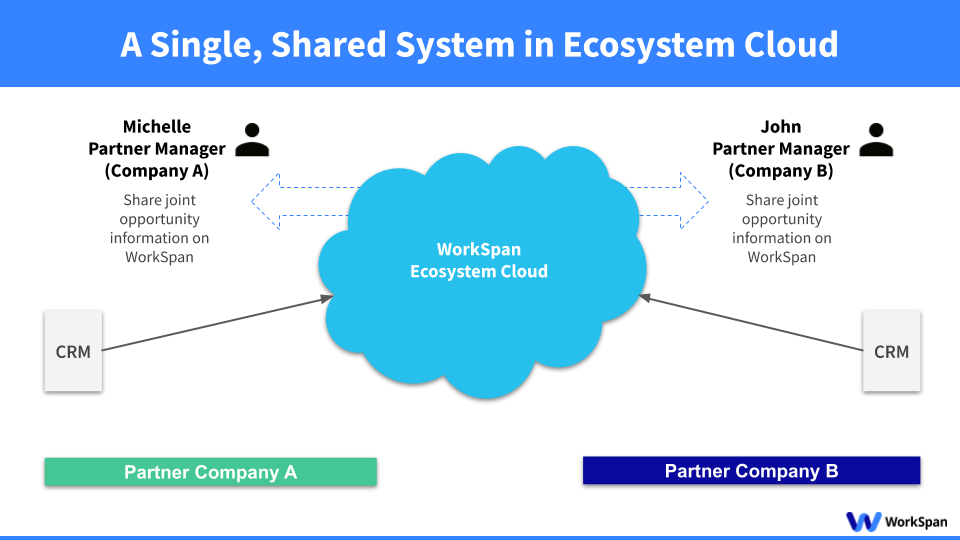
WorkSpan offers the ONLY solution where Partner Managers can plan, track and collaborate on a shared pipeline that stays in sync with the updates in your CRM and your partners’ CRM.
Instead of being mired in managing and reconciling spreadsheets, partner managers focus their time on value-added activities such as managing the sales motions, engaging and collaborating with partners to accelerate deal close times and increase deal sizes.
Looking Ahead
The traditional partner management practice is riddled with unreliable, challenging, and manual processes, which can result in adverse effects for all parties. WorkSpan allows partners to remove all the complexities from this process and minimize risk for all stakeholders, leading to:
- No manual data exports, cleansing, and sharing.
- A single, secure space to share opportunity details with multiple trusted partners.
- Quick and accurate reporting and forecasts across partners, solutions, regions, etc.
- Clarity and alignment of goals across all partners involved.
This game-changing partner management process powered by WorkSpan CRM integration functionality and combined with the data in your CRM supercharges your ecosystem motions and enables partners to become more efficient and productive in their sales cycles.
Want to learn more - check out our CRM Integration On-Demand webinar to see LIVE Demo or drop us a message at marketing@workspan.com, and we will be more than happy to walk you through it.
Heading
Heading 1
Heading 2
Heading 3
Heading 4
Heading 5
Heading 6
Lorem ipsum dolor sit amet, consectetur adipiscing elit, sed do eiusmod tempor incididunt ut labore et dolore magna aliqua. Ut enim ad minim veniam, quis nostrud exercitation ullamco laboris nisi ut aliquip ex ea commodo consequat. Duis aute irure dolor in reprehenderit in voluptate velit esse cillum dolore eu fugiat nulla pariatur.
Block quote
Ordered list
- Item 1
- Item 2
- Item 3
Unordered list
- Item A
- Item B
- Item C
Bold text
Emphasis
Superscript
Subscript



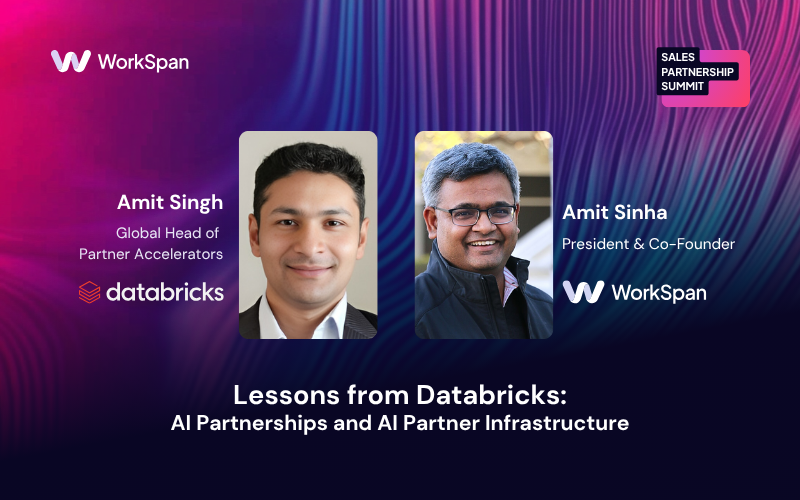

.png)